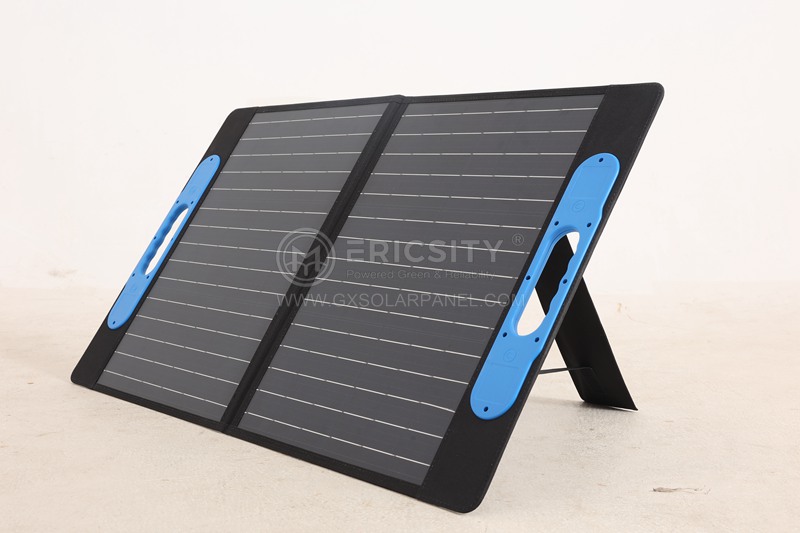HOT PRODUCT
Product Details
The Science Of Solar: How 300w Foldable Panels Generate Electricity
The Science Of Solar: How 300w Foldable Panels Generate Electricity
Solar energy is a rapidly growing source of renewable energy, and one of its most versatile and portable forms is the foldable solar panel. With advancements in technology, foldable solar panels have become increasingly popular due to their convenience, efficiency, and ability to generate electricity on the go. In this article, we will delve into the science behind these innovative devices and how they harness the power of the sun to produce electricity.
Foldable solar panels are constructed using photovoltaic (PV) cells, which are semiconductors that convert sunlight directly into electricity through the photovoltaic effect. The most commonly used material for these cells is silicon, chosen for its abundant availability and efficiency in converting solar energy.

The process of converting sunlight into electricity begins when photons, which are particles of light, strike the surface of the PV cell. These photons transmit their energy to the electrons within the cell, causing them to become energized. This process, known as the photoelectric effect, results in the creation of an electric current. The PV cells are interconnected in a circuit, allowing the electric current to flow and ultimately power devices or charge batteries.
Foldable solar panels consist of multiple PV cells connected in a series or parallel arrangement. In a series configuration, the positive terminal of one cell connects to the negative terminal of the next, creating a string of cells. This increases the overall voltage output. In a parallel configuration, all positive terminals are connected together, and all negative terminals are connected together, which increases the overall current output.
To enhance their efficiency, foldable solar panels are equipped with materials and technologies that optimize sunlight absorption. They are coated with an anti-reflective layer, typically made of silicon dioxide or titanium dioxide, to minimize reflection and maximize light absorption. This enables the panels to capture more sunlight and convert it into electricity.

Furthermore, foldable solar panels are designed with a surface texture that enhances light trapping. The texture, usually in the form of nanostructures, scatters incoming light, increasing the chances of interaction with the PV cells. This improves the overall absorption of sunlight and boosts the efficiency of the panel.

In terms of power output, the wattage rating of a foldable solar panel represents its capability to generate electricity. A 300w foldable panel can produce up to 300 watts of power under ideal conditions. However, it is important to note that various factors, such as the angle and intensity of sunlight, temperature, and shading, can affect the actual power output.
Foldable solar panels offer several advantages over their traditional counterparts. Their portability and flexibility make them ideal for outdoor activities, camping, and charging devices while on the go. They can be easily folded and unfolded, making them highly convenient for transportation and storage. Additionally, their lightweight design and easy setup make them user-friendly for individuals with little technical expertise.
In conclusion, foldable solar panels harness the power of the sun through photovoltaic cells to generate electricity. The science behind these panels involves the conversion of sunlight into electric current through the photoelectric effect. Their efficient design, which includes anti-reflective coatings and textured surfaces, optimizes sunlight absorption. With their portability and convenience, foldable solar panels are becoming a popular means of generating electricity while on the move. As solar technology continues to advance, we can expect even more efficient and innovative solar solutions in the future.




